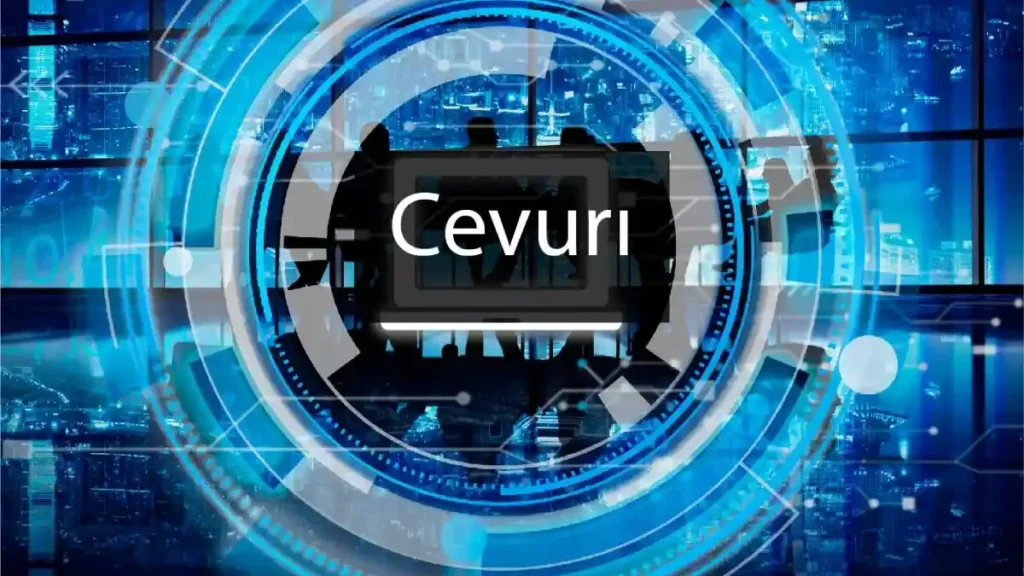
cevurı is an internet-born slang term derived from a likely mistranslation of the Turkish word çeviri (“translation”), now used loosely online. It doesn’t have one fixed meaning—its sense shifts with context.
cevurı originated as a misspelling or mis-rendering of the Turkish word çeviri, meaning “translation,” and quickly became a quirky internet neologism. As cevurı, it’s embraced in various online subcultures with flexible, playful meaning—sometimes jokingly referring to any kind of “translation” or reinterpretation, other times just a quirky tag. Though nonstandard, cevurı has evolved contextually and remains a curious artifact of internet language play.
Introduction to Cevurı
Cevurı is a fascinating term that has gained significant attention in recent years, especially in contexts involving language, technology, and cultural exchange. At its core, “cevurı” relates to the idea of translation or interpretation between languages and mediums. This article aims to explore the concept of cev in depth, discussing its origins, significance, applications, and impact on modern communication. By understanding ceı, readers can better appreciate how information is transferred and transformed across linguistic and cultural boundaries.
What Does Cevurı Mean?
The term cev literally translates to “translation” or “conversion” in many languages, particularly within Turkic linguistic groups. Cevu encompasses not only the simple act of changing words from one language to another but also the nuanced process of adapting meaning, tone, and cultural context. This broader interpretation highlights how cevu is more than a linguistic task—it is a cultural bridge that facilitates understanding between different societies.
Historical Background of Cevurı
Cev, as a practice, dates back centuries. Early civilizations relied on translators to communicate across empires and tribes with diverse tongues. Throughout history, cev played a crucial role in diplomacy, trade, and the spread of religious texts. For instance, the translation of ancient manuscripts from Greek to Arabic or Latin to vernacular languages involved meticulous cev efforts that shaped cultural and scientific knowledge across continents.
The Importance of Cevurı in Today’s Globalized World
In our modern, interconnected world, cevurı is more relevant than ever. Globalization demands constant communication across different languages and cultures, making accurate and culturally sensitive cevı essential. Whether in business negotiations, international relations, or content localization for media and entertainment, cev ensures messages are not lost or misunderstood. Without effective cevu, global collaboration would face significant challenges.
Types of Cevurı
Cevurı can be categorized into several types depending on the medium and purpose:
- Written Cevurı: Converting written text from one language to another, such as books, articles, and websites.
- Oral Cevurı: Interpretation of spoken language in real-time or recorded form.
- Technical Cerı: Specialized translation of technical documents or software.
- Cultural Cevı: Adapting content to fit cultural contexts and sensitivities.
- Machine Cevı: Automated translation using AI and software.
Each type requires specific skills and understanding to ensure accuracy and relevancy.
The Process of Cevurı
Cevu is not just a straightforward substitution of words. It involves several critical stages:
- Comprehension: Understanding the source language and its context fully.
- Analysis: Analyzing the meaning, tone, and purpose behind the message.
- Conversion: Translating the content into the target language while maintaining meaning.
- Adaptation: Modifying phrases or cultural references to resonate with the target audience.
- Review: Proofreading and revising for accuracy and fluency.
This process ensures the final output communicates the intended message effectively and naturally.
Challenges Faced in Cevurı
Cevurı professionals and tools often encounter several obstacles, such as:
- Ambiguities and idiomatic expressions that don’t have direct equivalents.
- Cultural references that may confuse the target audience.
- Technical jargon that requires specialized knowledge.
- Maintaining tone and style consistent with the original.
- Balancing literal translation with meaningful interpretation.
Overcoming these challenges is essential to preserve the integrity of the original content.
Technology’s Role in Modern Cevurı
Advancements in technology have revolutionized cevı. Machine learning, neural networks, and natural language processing now enable instant translation services like Google Translate or DeepL. These tools provide rapid cevı but sometimes lack nuance and cultural understanding. Therefore, human translators remain crucial, especially for complex or sensitive materials. The future of cev likely involves collaboration between humans and AI, enhancing speed and quality.
The Cultural Significance of Cevurı
Cerı acts as a cultural ambassador by transferring not only language but also ideas, traditions, and values. It enables cross-cultural dialogue and reduces misunderstandings. For example, in literature and cinema, cerı allows stories from one culture to inspire and educate others, fostering empathy and appreciation. Without cerı, many of the world’s rich cultural treasures would remain inaccessible.
Educational Impact of Cevurı
Cev is fundamental in education, especially in language learning and multilingual studies. Students rely on translated materials to access knowledge from other countries, broadening their perspectives. Furthermore, learning about cevurı encourages critical thinking about language, meaning, and communication, essential skills in today’s global workforce. Many universities now offer specialized degrees in translation and interpretation due to its growing importance.
Business and Cevurı: Expanding Markets Globally
Businesses aiming to enter global markets depend heavily on cevı. Product descriptions, marketing campaigns, and legal documents must be accurately translated to appeal to local consumers and comply with regulations. Effective cevu builds brand trust and avoids costly misunderstandings. As companies diversify their reach, the demand for professional cevu services is rapidly increasing, highlighting its critical role in economic growth.
Legal and Medical Cevurı: Precision Matters
In fields like law and medicine, cevı accuracy is vital. Misinterpretation can lead to legal disputes or medical errors, potentially endangering lives. Legal translators work with contracts, patents, and court documents, ensuring precise language transfer. Similarly, medical cerı involves patient records, consent forms, and pharmaceutical information, where clarity is crucial. These sectors require highly trained cerı specialists.
Future Trends in Cevurı
Looking ahead, cev is poised for significant evolution. Emerging trends include:
Increased use of AI-powered translation augmented by human oversight.
- Greater focus on cultural adaptation beyond literal translation.
- Expansion of audiovisual cevurı, including subtitles and dubbing.
- Development of real-time translation devices for seamless communication.
- Growing emphasis on ethical translation practices and data security.
These trends will shape how individuals and organizations communicate worldwide.
Key Skills Required for Effective Cevurı
Successful cevurı demands a combination of linguistic expertise and soft skills:
- Deep understanding of source and target languages.
- Cultural knowledge and sensitivity.
- Strong research and analytical abilities.
- Attention to detail and patience.
- Excellent writing and communication skills.
These competencies ensure translations are both accurate and engaging.
How to Choose a Cevurı Service Provider
When selecting a cevu provider, consider these factors:
- Experience and Specialization: Expertise in relevant languages and fields.
- Quality Assurance: Proofreading and revision processes.
- Technology Integration: Use of CAT tools and AI support.
- Confidentiality: Secure handling of sensitive information.
- Customer Support: Responsive and flexible communication.
These elements contribute to a reliable and effective cev partnership.
Conclusion: The Everlasting Importance of Cevurı
Cevurı remains an indispensable tool in bridging linguistic and cultural gaps in our diverse world. From ancient manuscripts to cutting-edge AI translations, cev continuously evolves but never loses its core purpose: enabling understanding and connection. Whether in education, business, law, or everyday communication, investing in quality ceı services enriches global interaction and promotes harmony. As technology and cultures advance, ceı will continue to be a vital force for positive exchange.
FAQs About Cevurı
What does “cevurı” mean?
A1: The term cevurı comes from a likely mistranslation of the Turkish word çeviri, which means “translation.” Online, it doesn’t have one fixed definition and is often used playfully in different contexts.
Q2: Is “cevurı” the same as Turkish “çeviri”?
A2: No. Turkish çeviri is the standard word for “translation,” while cevurı is an internet-born variant that developed its own quirky meanings in online culture.
Q3: How did the term spread on the internet?
A3: The spread likely began as a typo or mistranslation, then caught on in forums and meme spaces. Over time, it became a humorous or insider reference in digital communities.
Q4: Can “cevurı” mean more than just “translation”?
A4: Yes. In some spaces, the word is used to mean reinterpretation, remix, or even as a playful tag. Its meaning depends heavily on context.
Q5: Should I use “cevurı” in formal contexts?
A5: No. cevurı is nonstandard slang. For accurate or professional communication, it’s better to use the proper Turkish çeviri or the English word “translation.”




